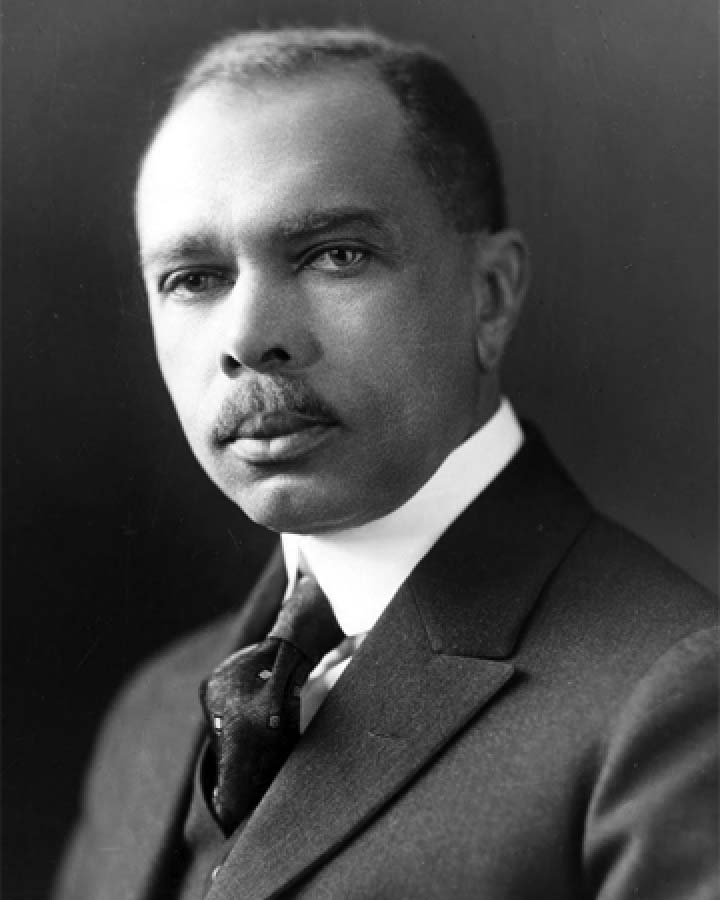A Reflection on "Lift Every Voice and Sing"
By Denise Holmes and Julia Florence
Our final post for Black History Month explores a traditional song that speaks of faith, hope, pain, and resilience.

James Weldon Johnson, author of the lyrics of “Lift Every Voice and Sing.” Photo by Addison Scurlock, courtesy of the Smithsonian Institution, National Museum of American History.
Lift every voice and sing
‘Til earth and heaven ring
Ring with the harmonies of Liberty
Let our rejoicing rise
High as the listening skies
Let it resound loud as the rolling sea
Sing a song full of the faith that the dark past has taught us
Sing a song full of the hope that the present has brought us
Facing the rising sun of our new day begun
Let us march on ’til victory is won
Thus opens a poignant and soul-stirring poem, written in 1900 by James Weldon Johnson to celebrate President Lincoln’s birthday. It was set to music by his brother J. Rosamond Johnson and first sung by a group of 500 African American children in Jacksonville, Florida that year at an event at the Stanton Institute, where James Weldon Johnson was principal. According to the author, he set the song aside and moved on to other work, but the children continued to sing it, taught it to others, and it spread rapidly throughout the southern United States. Johnson later stated, “The lines of this song repay me in an elation, almost of exquisite anguish, whenever I hear them sung by Negro children.”[1]
In 1919, the National Association for the Advancement of Colored People (NAACP), one of the nation’s two oldest civil rights organizations, for whom Johnson was then field secretary, dubbed it the “Negro National Anthem.” For more than a century, many have referred to “Lift Every Voice and Sing” as a hymn and it is, in fact, included in hymnals; Congressman James Clyburn of South Carolina recently supported making the song a national hymn. In July 2020, in a time of racial tumult at national and even global levels, as well as continued protest over the national anthem at its games, the National Football League announced that “Lift Every Voice and Sing” would be played before every game during the first week of the 2020 season.
Most Black people born in this country who are over the age of 40 can sing at least the first verse by heart or at least recognize the tune. They probably learned it and sang it in school, at church, or at community events. When Harvard’s Henry Louis “Skip” Gates Jr. released his recent book, Stony the Road, they likely recognized Gates’s title as the first line of the second verse of the song.
This November 2021 podcast Lift Every Voice and Sing – Silence is Not an Option (getpodcast.com), discusses the history and powerful cultural significance of the song. It notes the many artists who have covered the song, including Aretha Franklin and Stevie Wonder. Today, “Lift Every Voice and Sing” is a standard for glee clubs at the nation’s Historically Black Colleges and Universities (HBCUs), individually and collectively.
Yet “Lift Every Voice and Sing” is not without controversy. Some historians question the origin and purpose of the song, some question its meaning, and some its significance. In his book, Clark Atlanta University professor Tim Askew asserts that claiming that the song as the Black national anthem “can be construed as racially separatist and divisive.”
More than a century since they were penned, the lyrics of “Lift Every Voice and Sing” – written upon an important page in our nation’s history – transcend time. In Johnson’s words, “Let it resound loud as the rolling sea.”
[1] Lift Every Voice and Sing by James Weldon Johnson | Poetry Foundation